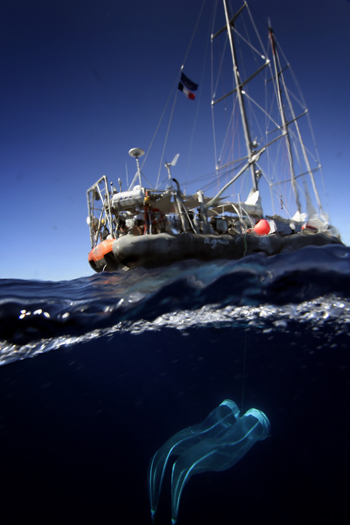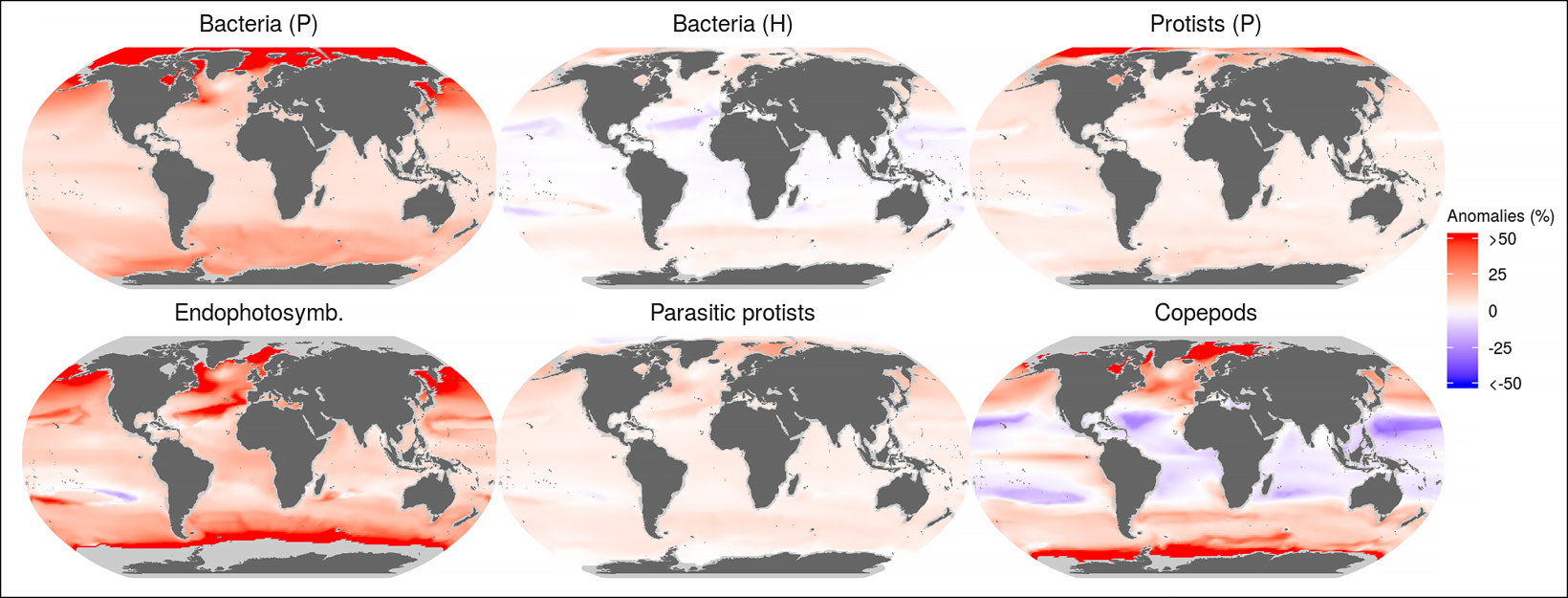There are more species of plankton in warm tropical waters than there are in the cold polar ocean. This result comes from an analysis of more than 35,000 ocean samples collected from around the world.
“We’ve known for more than 200 years about patterns of diversity on land,” said Chris Bowler, “thanks first of all to Alexander von Humboldt.” Humboldt tracked how on land, life is more diverse near the equator than near the poles, and now “we see these patterns for trees, we see them for animals, and we see them for microbes in the soil,” Bowler said. “But it has always been a question of whether we see these same patterns in the ocean.” Bowler is the director of research in ecology and evolutionary biology at the National Center for Scientific Research (CNRS) in France.
The research team, including Bowler, analyzed data collected by the Tara Oceans Expedition to map how marine plankton biodiversity changes with latitude. The researchers found that sea surface temperature plays a large role in controlling plankton biodiversity, which raised concerns about marine economic interests in warmer future climate.
Warmth and Biodiversity
“Because of ocean circulation, everything is connected and everything moves around in much more of a dynamic way,” Bowler said, “so we [could] not really say if those patterns of diversity that we see on land are also seen in the ocean.”

The Tara Oceans Expedition, launched in 2009, collected thousands of plankton samples from around the world from the ocean surface down to about 1,000 meters in depth. The data set includes “all kinds of planktonic organisms, from viruses through bacteria and archaea, to small eukaryotes and large eukaryotes such as zooplankton up to a few millimeters in size,” he said.
“We assessed these patterns of diversity using DNA sequencing data…and also using imaging data from different kinds of organisms” to look at morphological diversity, Bowler said. For nearly all types of plankton, the researchers found rich biodiversity at low latitudes that tapered off near the poles. “Notably, we didn’t see diversity gradients for all kinds of viruses, and we didn’t see diversity gradients in the deep ocean, which was interesting for us and kind of unexpected,” he said.
Using statistical models, the researchers tested different potential drivers of plankton biodiversity. “We found that temperature was the largest determinant of these diversity patterns, so the higher [the] temperature, the higher [the] diversity,” Bowler said. “But it’s not only temperature. It’s also productivity of different regions, nutrient concentrations, and so on.” Some eukaryotes like diatoms, which get their energy from sunlight, appeared to have higher diversity at cooler temperatures, which might be because they can survive at lower temperatures than cyanobacteria can.
The team published these results in Cell on 14 November.
Diversity in a Warming Ocean
Global climate models predict that sea surface temperatures will rise around the world and that Arctic waters will warm the most. How might plankton communities respond to warmer waters?
“We mapped out anomalies of diversity of plankton communities in the future ocean, and we could see that, in particular, we’re likely to have tropicalization of diversity toward the higher latitudes, the polar regions,” Bowler said. That is, as high-latitude waters warm to tropical temperatures, plankton biodiversity in those regions will likely boom.

“If these changes in diversity are then translated into changes in composition of plankton communities and abundances of different kinds of plankton, the different fish species may no longer find their favorite plankton to eat,” he said. “Plankton are at the very base of the ocean food chain, so if they change, the higher organisms eating the plankton may change as well.”
In addition to the impacts on fisheries, changes to plankton communities could also affect where to build marine protected areas and how the ocean captures and sequesters carbon, Bowler added.
—Kimberly M. S. Cartier (@AstroKimCartier), Staff Writer






